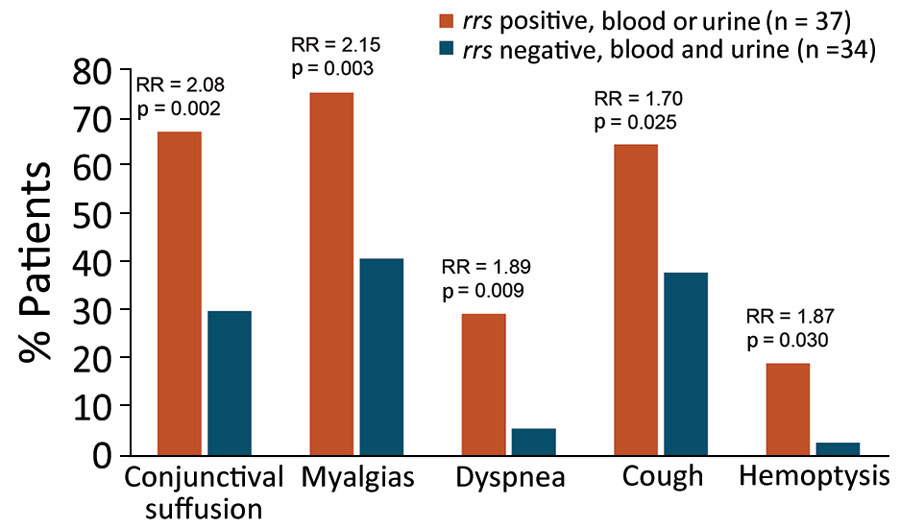Volume 30, Number 8—August 2024
Synopsis
Outbreak of Intermediate Species Leptospira venezuelensis Spread by Rodents to Cows and Humans in L. interrogans–Endemic Region, Venezuela
Figure 1

Figure 1. Distinguishing clinical features of hospitalized patients in study of outbreak of intermediate species Leptospira venezuelensis spread by rodents to cows and humans in L. interrogans–endemic region, Venezuela. The most statistically different clinical symptoms are shown for hospitalized patients considered to have leptospirosis according to positive PCR for the Leptospria rrs gene in either blood or urine specimens compared with those without leptospirosis according to negative rrs PCR in both blood and urine samples. PCR primers for rrs amplify a region of the gene encoding 16S rRNA that is highly conserved in Leptospira (Appendix Table 1). One patient whose urine culture grew L. venezuelensis was rrs PCR negative, and leptospirosis was not diagnosed (Appendix Table 9). Comparisons of all clinical features with 95% CIs were also determined (Appendix Tables 10, 11). RRs and Pearson χ2 test p values were calculated by using Stata 13 (StataCorp LLC, https://www.stata.com). RR, risk ratio.
1Current affiliation: Universidad de las Fuerzas Armadas ESPE, Santo Domingo, Ecuador.
2Current affiliation: Universidad de Buenos Aires, Buenos Aires, Argentina.
3Current affiliation: Institut Pasteur de Montevideo, Montevideo, Uruguay.
4Current affiliation: The University of North Carolina, Chapel Hill, North Carolina, USA.